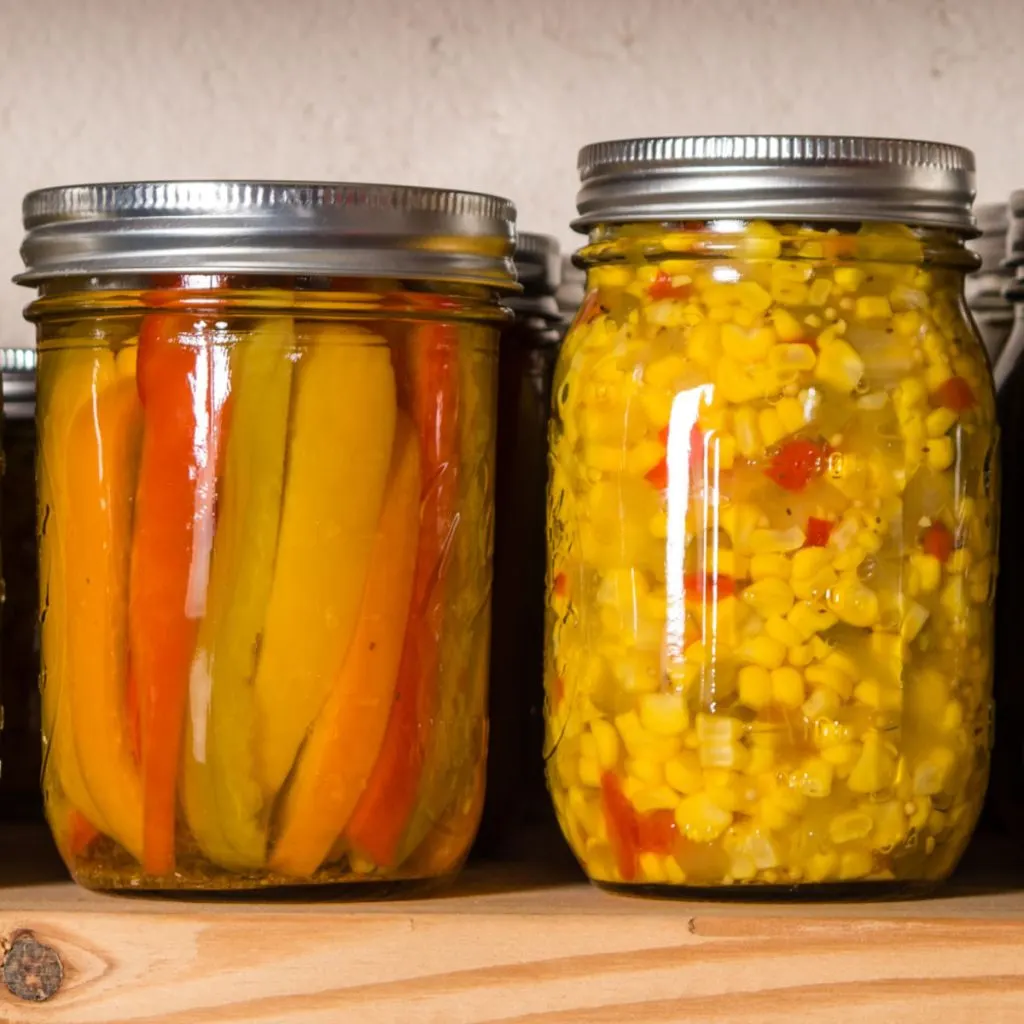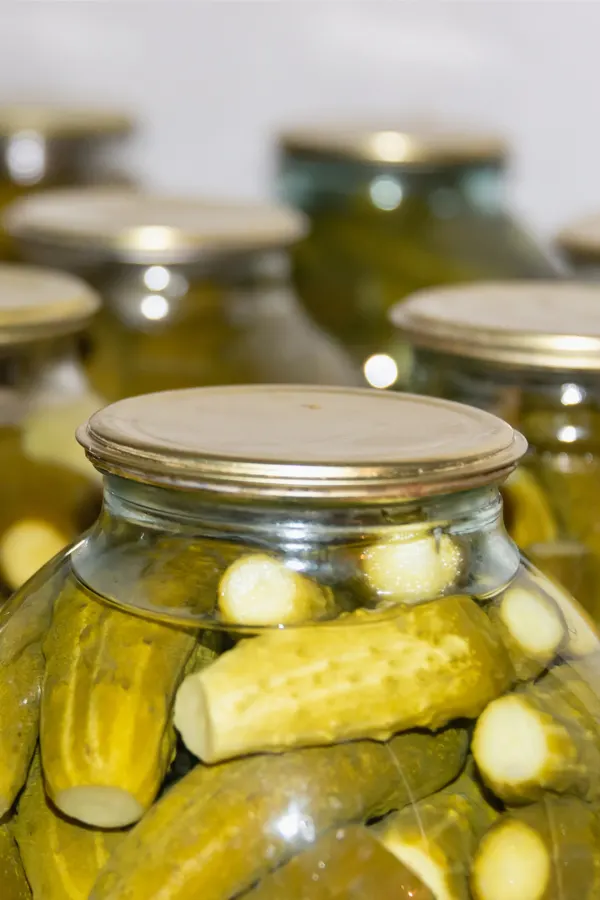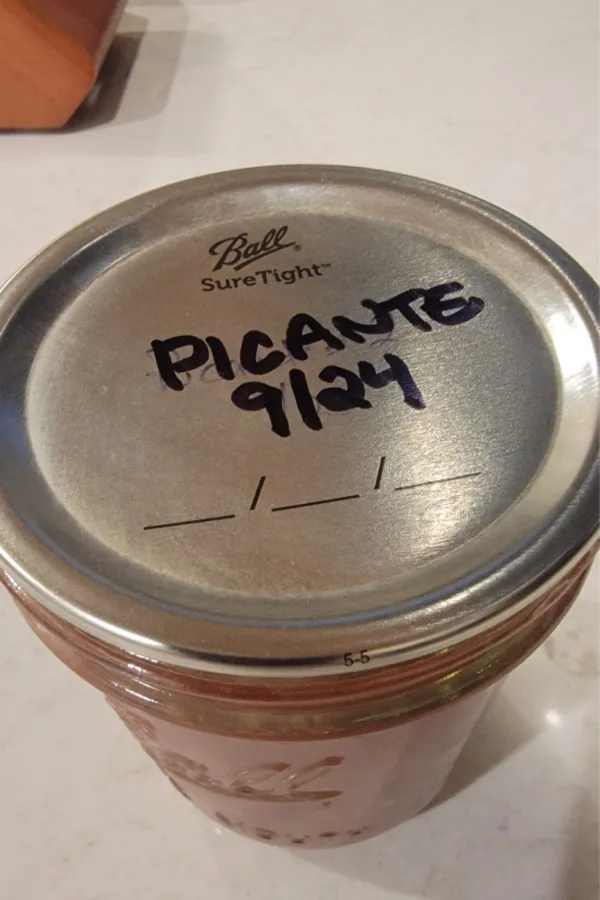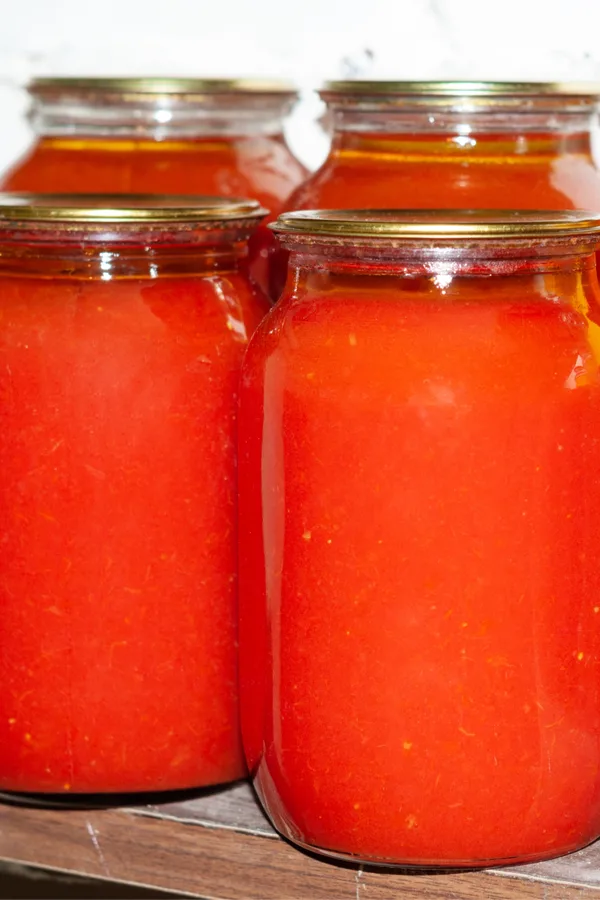When it comes to storing your filled canning jars safely, success all starts by avoiding three of the biggest and most common mistakes many make when they store their homemade canned food over the fall and winter months.
One thing is for sure, canning is back in style – and for good reason. With more people than ever tending to home vegetable gardens, preserving some of the harvest to use over the cold and dark winter months just makes sense. Especially when you throw in the ever-rising cost of groceries!
But once all of that food is in jars, where is the best location to store it? And exactly how should the jars be stored? And perhaps the biggest question of all – just how long can you store it safely?

As it turns out – those three questions are not only important – they also happen to be where some gardeners make a few key mistakes that can not just affect the quality of their stored food, but also the safety of the food in it.
So with that in mind – here is a look at 3 all too common mistakes to avoid this fall and winter when storing your canned good!
The 3 Biggest Mistakes To Avoid When Storing Canning Jars Over Winter
#1 Storing Jars With The Rings On
One of the biggest miscues of all is storing jars with the screw down lids still on. When placing your jars into their permanent storage area, you always want to remove the rings.
The rings are designed to help hold the lids in place for the initial pop and seal. And they do a great job of that for sure. But once your jars have cooled and are ready for storing, it is important to unscrew the rings and take them off.
This is important for several reasons, both of which relate to safety. First, if there is a problem with spoilage in your jar’s contents, the seal will almost always pop off. With no ring in place to hold it down, it is a great way to always know when you go to use a jar if it has held its seal. Without the ring, if it is bad, it will be loose.
Unfortunately, if the rings are still screwed down tight, it can prevent the seal from breaking when there is a problem. Furthermore, it can also hold the lid down tight while in storage, allowing the lid to even reseal. The issue of course is you may think your jar is fine, when it’s not.
Finally, leaving your rings on can also in some cases help to break a seal. As they loosen or tighten over time, they can disturb the seal and even break it. The bottom line – remove those rings before storing!
#2 Failing To Date Jars – The 3 Biggest Mistakes To Avoid When Storing Canning Jars
Another big mistake that canners make is failing to date their jars. After all, if there is no date – how do you know how old the contents are? And even though you think you might remember, a year or two can fly by quickly!
One of the first things you should always do when finishing up a batch of canning is date your jars. For us, the easiest way to do this is with a Sharpie marker right on the lid.

In just a few seconds, the day and year is on the lid forever for you to know exactly when the jar was processed. Although you can use labels and fancy stickers, they often fade or strip off the jars, leaving you wondering just exactly how old the contents inside are. That of course is never a good thing!
As for how long can a canning jar be safely stored, there are a lot of thoughts and opinions. We practice the widely common 12 month rule in our house. We know that when properly processed and stored, our canning jars will stay good for that time period. Beyond that, we err on the side of safety and stop using them.
#3 Keeping Jars Cool & Dark – The 3 Biggest Mistakes To Avoid When Storing Canning Jars
Last but not least – always store your jars in the coolest, driest location possible – and out of direct sunlight! All three of these conditions are equally important and can affect how long your canned goods will stay viable.
Not everyone has a dry, cool, dark room in their basement to store their canning jars. If you happen to, it is by far the best choice of all. But if you don’t, no need to worry, you can still safely store your jars in other places throughout your home.
It might be a cooler room in the house that receives little or no light. Or perhaps a closet or pantry that does not get excessively hot. Both work more than fine for storing canning jars for later use.
We don’t have a basement, but we are lucky enough to have a cool, dark room in our house that is perfect for storing all of our jars on our homemade canning jar pantry rack. See: Our Step By Step 2×4 Canning Pantry Plans
Avoid The Extremes
The real key is to avoid the extremes. You never want to place your canning jars near a furnace, heater, or hot air vents. Likewise, never store in a garage where it might freeze or get extremely hot. Even in cupboards, be sure that there is not a heating vent running behind that could make the space get too warm.
Always keep your jars out of an area that receives direct sunlight. The light can break down the product inside over time, or lead to excessive heating of the jars.
On the topics of basements, be sure that you are not storing in an area with excessive moisture. When an area is too wet, it can actually rust the metal lids, which can lead to them unsealing. If you have a damp basement, use a dehumidifier to help get the moisture out.
A Few Other Things To Avoid – The 3 Biggest Mistakes To Avoid When Storing Canning Jars
Finally, there are a few other things to always avoid or do when storing your jars. Here is a look at some of the most important:
- Never stack canning jars on top of one another
- Always store canning jars upright, never on their side or upside down
- Check your jars periodically, making sure lids are in place
- Always check jar rims when opening for glass breaks or chips
- Do not shake jars when storing
It All Starts With A Safe Canning Process
Safe canning all starts of course with using only tried and true canning recipes. Recipes that have been tested and approved for safe storage and consumption. After all, if you don’t start off with a safe product in the jar, it doesn’t matter how you store it!
Unfortunately, modifying canning recipes, or creating your own from scratch can have serious consequences. If there is not enough acid in tomato recipes, it can lead to unhealthy and dangerous food. Same goes for canning corn, green beans and many other vegetables.
But by simply following tried and true recipes, canning can be perfectly safe. And, of course, delicious and healthy too! See: Our Favorite Canning Recipes
Here is to storing your canning jars safely, and to getting the most from your harvest. Happy canning and gardening – Jim & Mary.
Old World Garden
Jim and Mary Competti have been writing gardening, DIY and recipe articles and books for over 15 years from their 46 acre Ohio farm. The two are frequent speakers on all things gardening and love to travel in their spare time.
As always, feel free to email us at thefarm@owgarden.com with comments, questions, or to simply say hello! You can sign up for our free email list in the subscribe now box in the middle of this article. Follow us on Facebook here : OWG Facebook. This article may contain affiliate links.



